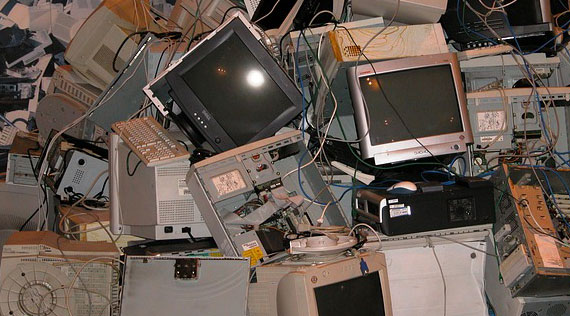
SEATTLE (Waste Advantage): Every four years, the host country of the Olympic games revels in the global spotlight for sixteen days. While few countries are able to create a lasting imprint once the games are over, Japan has a unique plan to change this: at the 2020 Summer Olympics in Tokyo, winning medalists will quite literally own a piece of Japanese… trash.
Japan has pledged to recover up to eight tons of metals from obsolete smartphones and other electronic gadgets, which will be converted into 5,000 gold, silver, and bronze medals ahead of the games, according to a press release on the Olympic Games website.
This initiative — known as the Tokyo 2020 Medal Project — is in part a response to the global “e-waste” crisis. Although only a tenth of the population, Japan is second to China when it comes to generating e-waste, according to UN University’s Regional E-Waste Monitor. In 2011 alone, 36.39 million mobile phones were made in Japan and only 7.62 million units — or 20.9% — were collected under the Mobile Recycling Network — a network of 9,000 retail outlets that collect mobile parts.
It’s a problem across Asia, with the volume of e-waste increasing by 63% in the five years ending in 2015. Asia is also the largest manufacturer and market for EEE — a term used to describe electrical and electronic equipment not intended for re-use. This amounted to 12.3 million tonnes in 2015 — a weight akin to 2.4 times that of the Great Pyramid of Giza in Egypt. Globally, the amount of e-waste is projected to grow to 49.8 million tons by 2018, with an annual growth rate of 4-5%. China alone increased its waste to 6.7 million tons — up 107% from 2010 to 2015. Meanwhile, Hong Kong (21.7 kg) and Singapore (19.95 kg) had the highest average e-waste generation per capita in the region in 2015.
An Urban Mine
What happens to discarded mobile phones when consumers trade up for newer, slicker gadgets? “A majority of used mobile phones are exported to other countries, including Hong Kong, for second-hand markets and/or refurbishment,” says Shunichi Honda, Programme Officer at UN Environment in Japan. The rest are tossed into drawers, destined to end up at landfill sites, or — and this is the most pernicious case of all — exported to countries, where those eager to strip e-waste of its raw materials may engage in “backyard burning.”
“Many of manual dismantling and recycling processes in some Asian and African countries are toxic to human health and the environment, such as open burning, incineration without any protective measures, open dumping, etc.,” says Honda.
There’s little doubt that discarded tablets, mobile phones, and laptops represent a treasure trove of precious materials. An EPA report reveals that “the metric ton of circuit boards can contain 40 to 800 times the amount of gold, and 30 to 40 times the amount of copper mined from one metric ton of ore in the United States.”
And this is exactly what Tokyo’s 2020 Medal Project is attempting to salvage. Out of the eight tons it has pledged to recycle, it aims to collect 40 kg of gold, 4,920 kg of silver, and 2,944 kg of bronze. And so far, the project has been a measured success. At the end of August this year, telecom giant NTT Docomo — a partner in the project — collected approximately 1,300,000 used mobile phones.
Consumers are also increasingly choosing to turn in their old phones to participate in manufacturer’s buyback or trade-in programs — arguably one of the more sustainable options. For Apple products, a Bloomberg investigation reveals that the hazardous waste from a shredded iPhone is either stored at a licensed facility or reincarnated as aluminum window frames and furniture or glass tiles.
Courtesy: https://wasteadvantagemag.com



| Copper Scrap View All | |
| Alternator | 0.42 (0) |
| #1 Copper Bare Bright | 4.36 (-0.02) |
| Aluminum Scrap View All | |
| 356 Aluminum Wheels (Clean) | 0.83 (0) |
| 6061 Extrusions | 0.73 (0) |
| Steel Scrap View All | |
| #1 Bundle | 360.00 (0) |
| #1 Busheling | 380.00 (0) |
| Electronics Scrap View All | |